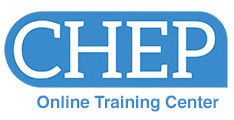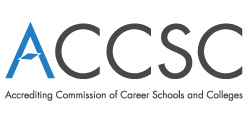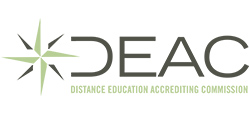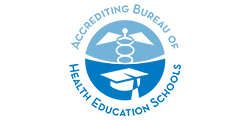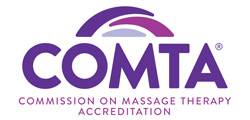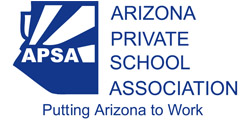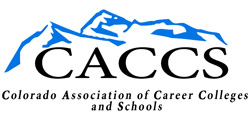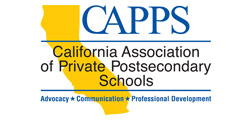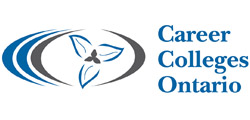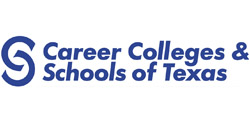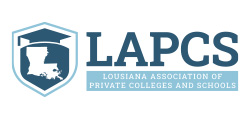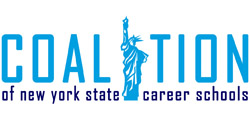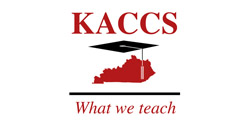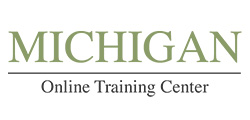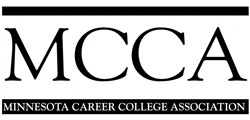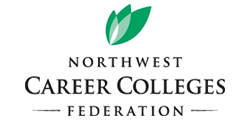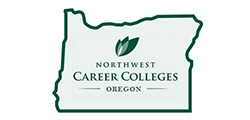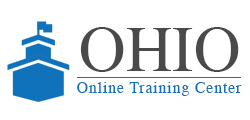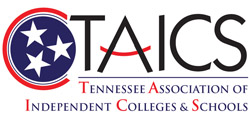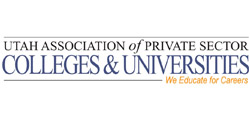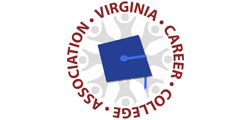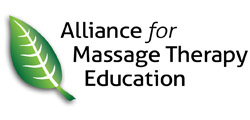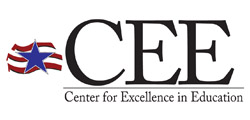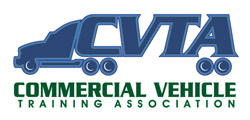Badge Evidence | Completed Courses (4 Hours Each)
ABHES101Developing a Program Effectiveness Plan (PEP)
The health care field is growing rapidly, as are the requirements for preparing individuals to enter and be successful in their chosen health care fields. To remain current with the demands of career preparation areas, colleges and universities need to have a plan of action to assess the status of programs and strategies for improving instructional offerings. This course will provide participants with a step-by-step process to complete an internal program quality assessment tool called the Program Effectiveness Plan (PEP). Resources are provided that will expand the knowledge base of participants and assist them in completing a PEP.
This course is sponsored by
Accrediting Bureau of Health Education Schools
Accrediting Bureau of Health Education Schools
CM102Raising the Bar - Compliant Communications with Students
This course is designed for employees of all roles and levels at institutions that participate in federal financial aid programs. The course provides an awareness of prohibited acts which could adversely impact operations, and covers the requirements which must be adhered to in order to maintain good standing with state* and federal regulations as outlined in the Program Integrity rules. Emphasis is on areas of misrepresentation related to advertising and recruitment activities, interactions with prospective students and appropriate communication of disclosures and other publications.
*This course currently covers the regulations for the following states: AZ, CA, CO, FL, GA, IL, IN, KS, LA, MA, MI, MN, MO, MS, NC, NM, OH, OK, OR, PA, SC, TN, TX, VA, WA. Course participants can select specific state(s) at the beginning of the course to customize the training content to their state.
CM140Title IX and VAWA Training: Building Safer Campuses
This course is designed to assist personnel at all levels of an educational institution in the understanding of the provisions of Title IX of the Education Amendments of 1972 ("Title IX") as amended on August 1, 2024, and the Clery Act as amended in the Violence Against Women Reauthorization Act of 2013 ("VAWA"). These laws require that all individuals in an educational institution understand and comply with the laws in terms of what is prohibited behavior in relation to sex-based harassment and/or sexual violence, and what steps are to be followed when such prohibited conduct occurs. This course gives the participants information about the laws, as well as procedures to follow, to provide for the rights of all individuals under the laws. It also provides additional resources to assist educational institutions in continuing to build and strengthen their Title IX and VAWA policies, procedures and training throughout the year.
CM142Understanding Title IX, VAWA, and the Clery Act
This course will review Title IX, the Jeanne Clery Disclosure of Campus Security Policy and Campus Crime Statistics Act, and the Violence Against Women Act. In addition to the background of each topic, victim rights, support system implementation, and grievance policies will also be explored.
The goal of this course is to help develop a better understanding of the topic and produce tangible resources to help implement plans, strategies, and ideas at your school.
In addition to lecture videos, links to resources, and assessments, you will be able to utilize the Journal and Learning Activities. Take advantage of a method that works best for you.
CM151Onsite Visits - Be Ready Anytime
Is your campus ready for a full unannounced visit at any time? Onsite visits are becoming more frequent in recent years and unannounced visits even more so. This training is designed to aid campus leaders to be prepared, using best practices and practical tools, to host an onsite visitor at any time, including visits that are unannounced, by any organization such as state agencies, veterans' organizations, regional, national and programmatic accrediting agencies and the Department of Education.
FA110Developing an Efficient Financial Aid Office
This course provides a blueprint for running an effective financial aid office in an educational institution. You will learn to optimize the performance of your financial aid office with a minimum of waste, expense, and unnecessary effort. The course covers the cornerstones of an efficient financial aid office: timeliness, accuracy and customer service. You will also be advised of pitfalls to avoid in the realm of Title IV compliance. You will learn the key points to building an effective business office processing procedure. Reports and notifications required by the Department of Education are also explained. In addition, you will be given pointers on preparation for the annual Student Financial Aid (SFA) compliance audit and alerted to the most common triggers for Department of Education Program Reviews.
FA231Regulatory Compliance - Outside the Financial Aid Office
This course will help participants to interpret the many rules and regulations that are required by educational institutions offering Title IV funding. It will aid in preparing management and faculty in recognizing that compliance is the responsibility of the entire institution and is not just the job of the Financial Aid Office. Course content will also aid the individual in building a "culture of compliance" which will encourage teamwork and secure the cooperation of others on campus.
LS101RDo You Manage Or Lead?
This course explores the critical differences between management and leadership. Participants will be introduced to definitions and myths about each area as well as how management and leadership must coexist for an organization to operate effectively. Participants will explore their own management/leadership tendencies through exercises to see leadership and management in action.
LS102How Do You Lead?
Not everyone is suited for, or desires, a leadership position. One of the first steps to being an effective leader is to understand the desire to lead in the first place. Participants will explore their motivation to lead and develop a deeper understanding of their leader style(s).
LS103RYour Leadership Impact
To improve your impact and effectiveness as a leader, you must not only understand the role of a leader, but you must also take into consideration the followers and the situation. This course defines leadership impact and explores the interactional framework for leadership.
LS104RYour Leadership Legacy
The higher education industry provides a wealth of opportunities and challenges for those seeking leadership positions. In this course, participants will gain a deeper understanding of the higher education sector and themselves. The importance of higher education institutions will be explored along with developing a personal leadership legacy.
LS105RYour Leadership Toolkit
Get ready to add a number of skills to your toolkit as you develop as a leader! This course focuses on increased self-awareness in communication styles and learning; developing deeper understanding through empathic listening; and motivating through innovation.
LS106This Way to Leadership
This course provides you with a framework to put your self-discovery and learning into a workable plan to further develop your leadership skills. A step-by-step process is offered to help you create a meaningful Personal Leadership Development Plan (PLDP) complete with the development of SMART Goals and advice from some of today's leaders in the higher education sector.
ML111Leading and Motivating
This course provides a synopsis of the essential tasks of leadership setting direction, aligning people, and motivating others. You will learn how to recognize the skills and characteristics of effective leaders, create an inspiring vision, and energize people to support and work toward your goals.
ML122Difficult Interactions
This course will show you how to discuss and resolve difficult interactions in the workplace - whether with employees, peers, bosses, or even suppliers and customers.
OP105Developing a Five-year Plan for Your Educational Institution
What will your institution look like in five years? Growth takes change and the commitment of the stakeholders in your organization. A five-year plan is essential for any owner or director of an educational institution, no matter how long they have been in the business. It includes various elements such as your enrollment goals for all programs, plans for new programs, new profit center potential, fees and all financial aid opportunities, enhancement of student services, faculty and staff planning, marketing and development strategies, and planning for physical space to support your expansion goals. Also, development plans are often needed to satisfy licensing and accreditation requirements.
This course covers the essential components and techniques involved in developing a comprehensive five-year plan. We will show you an effective step-by-step planning process that involves the participation of representatives from your institution including staff, instructors, students, graduates, and the employers who hire your graduates. The process encourages participants to share their knowledge and ideas, and everyone who participates in the process ultimately becomes a stakeholder in making the plan work. The course includes planning worksheets that you can download and use to help you develop your institution’s five-year plan.
OP106Developing New Programs: Research and Selection
Educational institutions need to be aware of emerging employment opportunities in new and expanding fields if they are going to continue to attract students. Most licensing and accrediting agencies ask an institution for some form of feasibility study when submitting new program-add applications. The research involved in this step often requires proof of need for the program, number of anticipated job openings, and input from employers. This course outlines ways to collect data to make an effective decision and show regulatory agencies proof of employment opportunities. Step-by-step directions are included to assist institution staff in conducting effective research and preparation of curriculum to meet employer specifications.
OP110Developing Effective Advisory and Governing Boards
Vital advisory and governing boards create additional opportunities to enhance operations within an educational institution. Well-prepared board members engaged in appropriate and timely activities can make a substantial contribution to operational, financial and management success. Creating, managing and maintaining effective advisory and governing boards can be a demanding yet rewarding process. Board members have to be identified, recruited, and trained to be effective and to understand their role as individual contributors and as members of a group of advisors. To gain maximum leverage from a board, members must also remain motivated and retain a concentrated focus on the institution's mission, purpose and goals. This course will provide a blueprint, with accompanying checklists, for establishing and maintaining effective advisory and governing boards in an educational institution.
OP115RHiring the Right Faculty for Your Institution
This course shows you how to hire high-quality instructors and orient them to your institution. The skills also apply to hiring staff. It's easy to hire someone to do a job. But it can be difficult to hire the right person. You want instructors who are top notch. They represent your institution and interact with the most people at your campus and particularly your students. This course starts with how to determine exactly what type of people you need as your instructors. Then it shows you how to recruit and hire them. Once hired, you'll learn how to introduce them to the working environment at your institution. By the time you finish this course, you'll be recruiting, hiring, and orienting quality instructors. You'll see results in improved enrollments, student achievement, retention, and completion.




